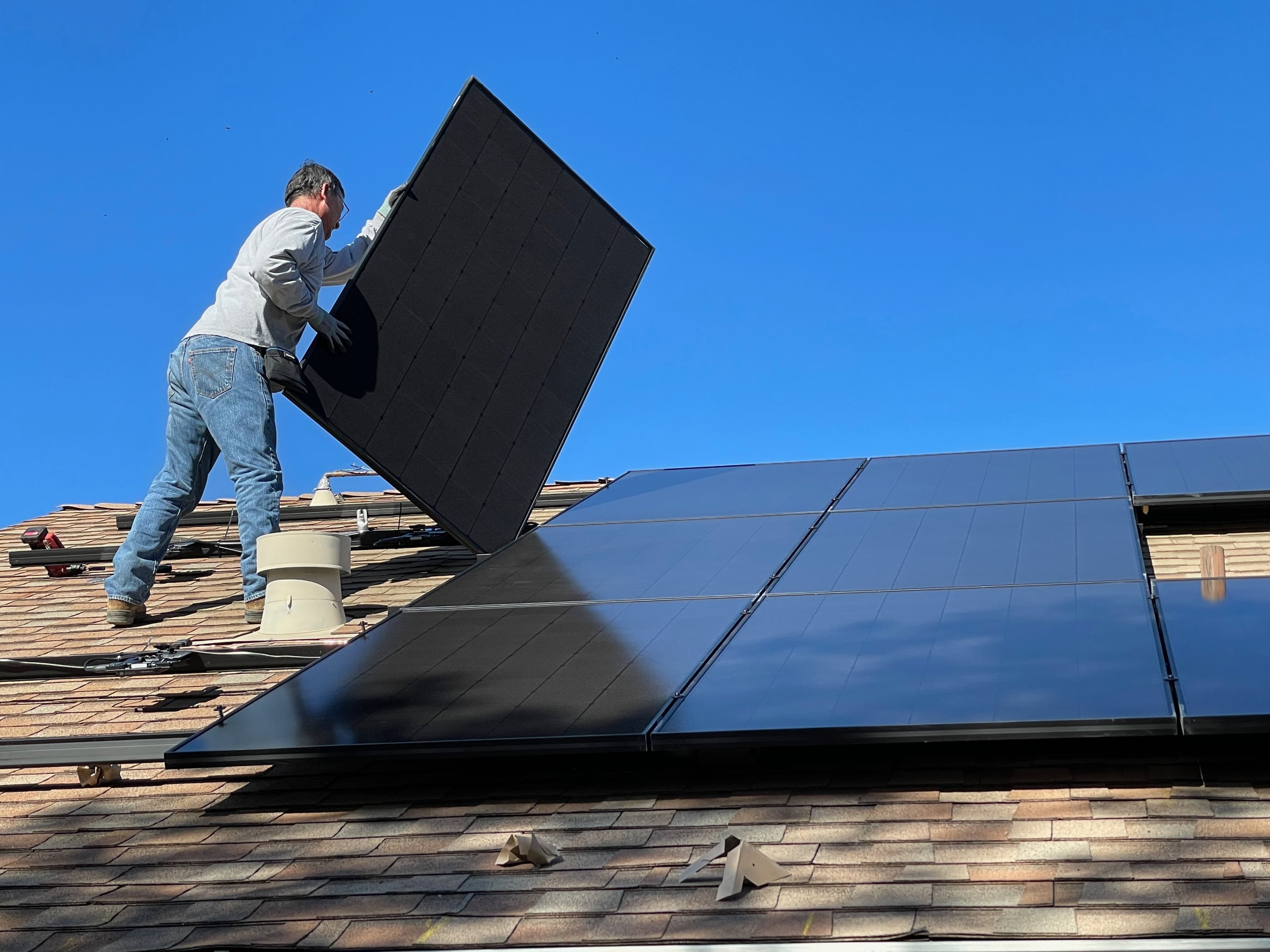
Switch to solar energy with rooftop photovoltaics
Summary
A shift in the power mix from coal- and gas-based electricity generation to photovoltaics can substantially reduce related lifecycle emissions
Key resources
Solution
The electricity industry accounts for around 32% of annual global carbon dioxide emissions, producing approximately 15.8 gigatonnes of CO2 emissions (1), with renewable energy sources contributing some 27% of electricity generation (2).
The main sources of electricity generation for national grids are coal (37%), natural gas (24%), hydro (16%) and nuclear (10%) systems. Today, solar PV electricity generation is estimated to account for just 3% of the market (2).
Rise in demand for electricity
Going forward, the growth in electricity demand is expected to accelerate compared to previous decades, due to economic progress, with hundreds of millions of households joining the middle classes, and electrification across multiple sectors. Renewable sources of power generation are expected to provide the majority of this global growth in power generation. A shift in the power mix from coal- and gas-based electricity generation to photovoltaics and other renewable, for example installing photovoltaic panels on rooftops or solar farms, can substantially reduce related lifecycle emissions by ~95% per kWh (3).
Usage
The market for solar PV electricity generation is expanding at a rapid pace. From its current market share of around 681,00GWh in 2019 (3%),it is expected to grow to a 15% market share by 2030 (4). Image: Renewables are projected to account for 80-90% of power generation globally by 2050

Source: McKinsey. Global Energy Perspective 2022.
Analysis from McKinsey shows that the solar PV sector may see 0.8 to 1.2 trillion US$ of investment in the next ten years, as more companies add photovoltaics to their operations. In 2020 alone, some 21,300 MW of solar PV capacity was installed (an 18% year-on-year increase), reaching a total of 138,200 MW. By 2030, an estimated 470,00 MW of capacity could be added to the global electricity generation mix.
Impact
Climate impact
Targeted emissions sources
Photovoltaics used for electricity generation target carbon dioxide emissions across all stages of the product life cycle and across all scopes, depending on the use scenario (e.g. energy provider, end client installing PV panels, etc.).
The transition to rooftop photovoltaics impacts Scope 1 and Scope 2, and Scope 3 emissions in:
Category 1 (Purchased goods and services)
Category 3 (Fuel- and energy-related activities not included in Scope 1 or Scope 2)
Category 10 (Processing of sold products)
Category 11 (Use of sold products)
Category 12 (End-of-life treatment of sold products)
Decarbonization impact
Capital investment in rooftop or ground-mounted PV panels initially increases carbon dioxide emissions, due to the sourcing of raw materials, the manufacturing of solar panels and the installation process. As 60-70% of PV panel life cycle carbon dioxide emissions are upstream in materials sourcing and module manufacturing.
Nevertheless, the use of PV panels results in more than 90% lower carbon dioxide emissions per kWh of energy produced compared to coal generation (21-26% of life cycle CO2 emissions during operations). When assessing the carbon footprint impact of PV panel installation, it is important to consider whether conventional energy sources have been replaced, and / or whether additional demand requires new plant investment.
Finally, end-of-life treatment emissions are lower for solar PV panels compared to other electricity generation sources. For selected manufacturers, nearly 96% of PV panel materials can be recycled for further use (representing 5-20% of life cycle CO2 emissions during decommissioning or disposal).
Business impact
Benefits
Clean and low emission electricity generation, low operating and maintenance costs, tax breaks and subsidies depending on the country of application, ease of installation on rooftops and on the ground, and end-of-life treatment high recyclability.
Costs
Impact on operating costs
Operating costs for solar PV panels are among the lowest in the electricity generation market, and are expected to decrease further towards 2030.
Investment required
Capital investment costs into solar PV panels are currently more expensive than other fossil fuel-based electricity generation, but will fall towards 2030 as solar technology progresses.
Eventual subsidies used
Regional and country-specific subsidies apply based on location of use.
Indicative abatement cost
Abatement cost for solar PV panels (depending on the technology currently in use): -20 to 25 USD per tCO2e (2022) – LCOP of 60 USD/kWh
-60 to -30 USD/tCO2e (2030) – LCOP of 40 USD/kWh
Impact beyond climate and business
Co-benefits
No operating noise, electricity generation increases in peak day hours, supporting high grid demand, local financial incentives for installation, and no interference with residential lifestyles during operations.
Potential side-effects
Electricity intermittency issues depending on the region and weather conditions, lower reliability compared to other solutions, and large areas of deployment leading to visual landscape pollution.
Implementation
Typical business profile
All individual and institutional clients in most industries and sectors using electricity in their day-to-day operations.
Approach
The potential implementation of photovoltaics must consider the amount of sun in any given location throughout the year, and the efficiency of system operations in the country of use. Additionally, local tax breaks and subsidies should be taken into consideration.
The solution can be integrated within the national electricity grid or serve as a stand-alone for electricity generation in remote locations.
Implementation and operations tips
Prior to adoption, the type of PV technology must be considered (crystalline silicon, thin film, etc), the size of installation required, local solution efficiency, annual weather conditions, and the cost of maintenance and servicing.
The large-scale implementation of photovoltaics requires a higher usage of space than other solutions, therefore access to large surfaces and land is required when considering significant investments.
The maintenance strategy must be adjusted to local conditions, eg. sandstorms or frequent snowfalls that may cover the surface of PV panels.
Additionally, energy storage solutions for energy providers must be implemented to avoid energy shortages in unfavorable weather conditions (such as a lack of direct sunlight).
Going further
Main sources
Further readings